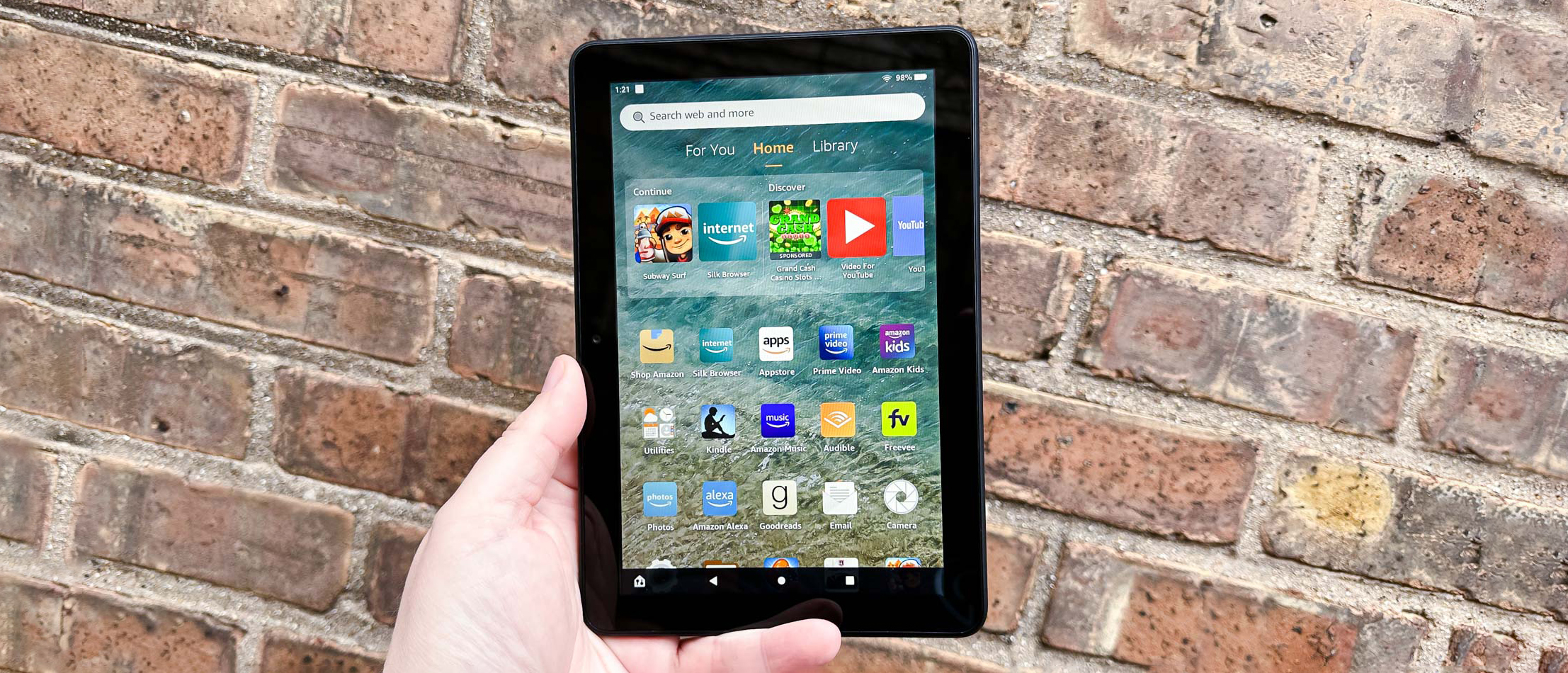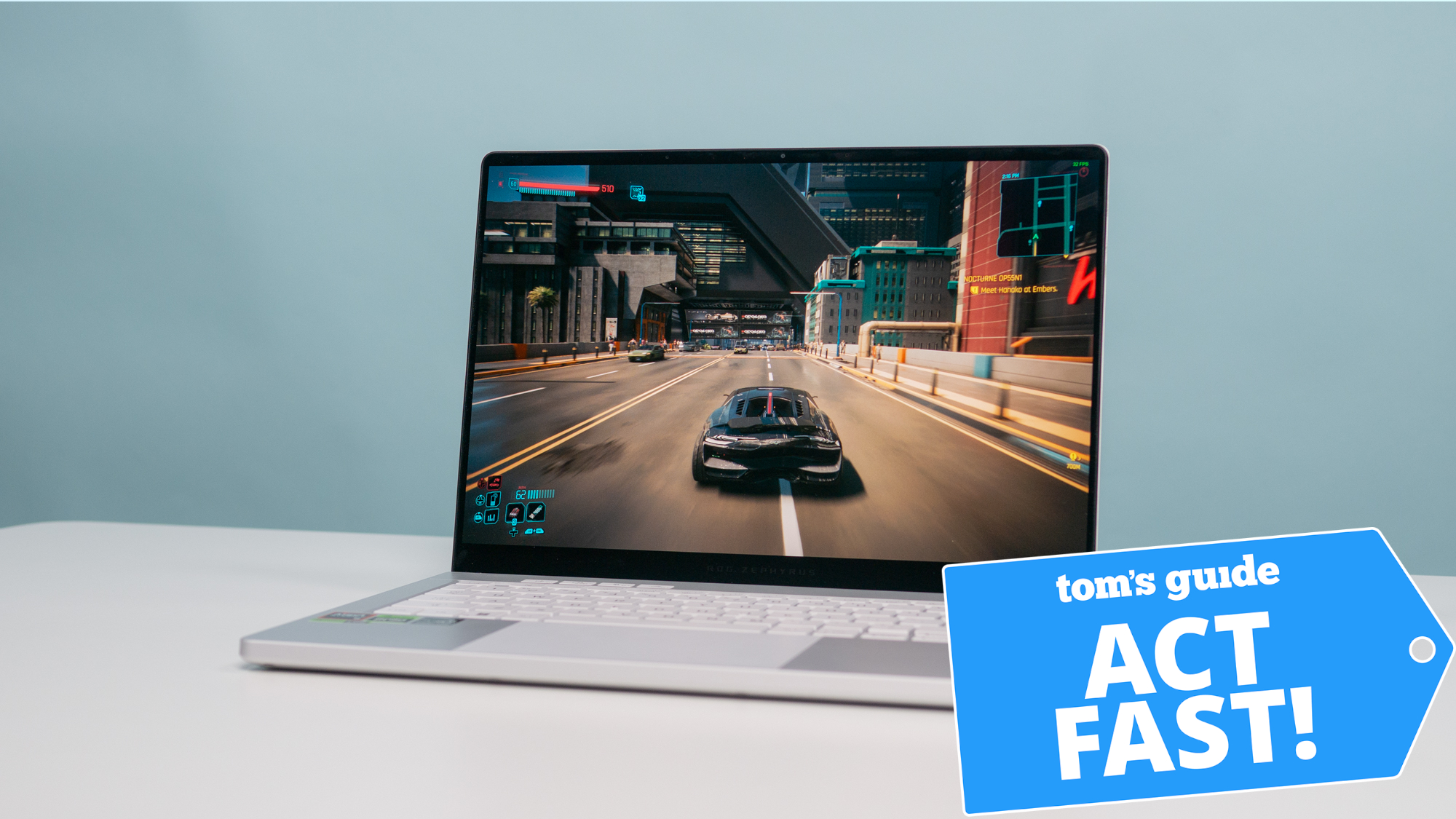Tom's Guide Verdict
Amazon’s latest Fire HD 8 revision doesn’t make massive changes, but this capable-enough tablet still feels like a steal at $100.
Pros
- +
Bright screen
- +
Excellent battery life
- +
Fantastic value
- +
Strong speakers
Cons
- -
Performance limitations
- -
Rough cameras
- -
Amazon’s ecosystem
- -
Lock screen ads
Why you can trust Tom's Guide
Price: $100
Display: 8-inch 1280x800 LCD Touch
CPU: 2GHz hexa-core
RAM: 2GB
Storage: 32GB, 64GB
Ports: 1 USB-C, 1 microSD slot, 1 Headphone port
Size: 7.94 x 5.4 x 0.37 inches
Weight: 11.88 ounces
Amazon’s tablets have long maintained the reputation of being shockingly good for their low prices, and the middle-sized device — the Amazon Fire HD 8 — represents the sweet spot in terms of price, power, and functionality. That’s unchanged with the new 2022 model, although it comes with some nice tweaks and upgrades from the last edition.
This 12th-generation Fire HD 8 tablet packs roughly 30% more power than the last model, helping to smooth out some of the spurts of lag we saw when we reviewed the older hardware. It’s also lighter, but Amazon says that it’s more durable than before. Granted, it’s also $10 more expensive than before.
But the overall experience and value equation are much the same: this is an amazingly solid tablet for the price ($100) if you can deal with modest performance, along with more pressing annoyances like lock screen ads and the limitations of Amazon’s app ecosystem.
Amazon Fire HD 8 (2022) review: Price and configurations
- The Fire HD 8 starts at $100 with lock screen ads and 32GB storage.
- Skip the ads for $15 extra, or double the storage for $30 more.
The Amazon Fire HD 8 starts at $100 for the default configuration, which serves up advertisements on the lock screen and comes with 32GB of internal storage.
You can skip the ads altogether by paying $15 more upfront or removing them later for the same price, and double the internal storage for another $30. As such, the priciest configuration with no ads and double the storage will run you $145. I reviewed the Fire HD 8 in black, but Amazon also offers it in Denim (navy blue) and Rose (pink) options.
For the most part, the ads are unobtrusive. They point to mobile games that you can download on Amazon’s Appstore, as well as shows on Amazon Prime Video, Kindle ebooks, and more.
In other words, they help fuel Amazon’s business model, which offers up dirt-cheap devices in the hopes that you’ll spend cash on content. It’s a reasonable deal, in my view, but $15 is also a fair price to pay to unplug from the marketing barrage.
Note that Amazon also offers a Fire HD 8 Plus edition that starts at $120 and packs in extra RAM for smoother performance, wireless charging, faster wired charging, and a higher-res back camera. Again, it’s a small price to pay for potentially useful upgrades, but cost-conscious buyers can probably do just fine with the core Fire HD 8 model.
Amazon Fire HD 8 (2022) review: Design
- The Fire HD 8 (2022) is nearly identical to the previous model.
- It’s still slim and lightweight, with a plastic shell.
At a glance, Amazon hasn’t done much to shake up the design of the Fire HD 8 from the previous model, nor would most people notice that it’s about half an ounce lighter, weighing in at just under 12 ounces. Amazon made a couple tweaks the last time around to implement a USB-C port (over microSD) and shift the front camera, but this edition doesn’t change much.
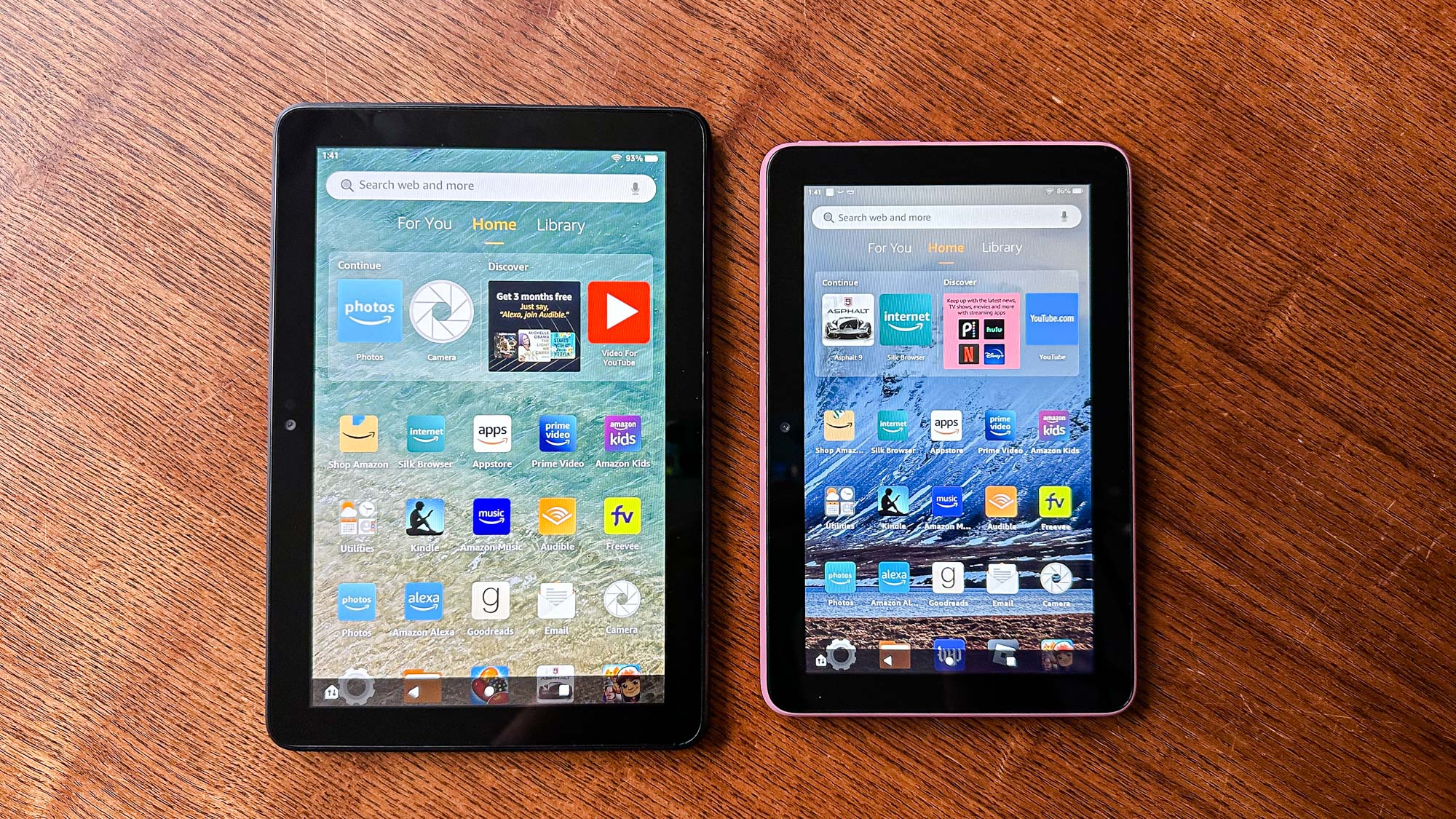
Given the lightweight build and compact dimensions (7.94 x 5.4 x 0.37 inches), the Fire HD 8 feels slim and easy to tote around. It’s easy to pop into a small bag or carry around your home. It might even fit into a baggier pants pocket.
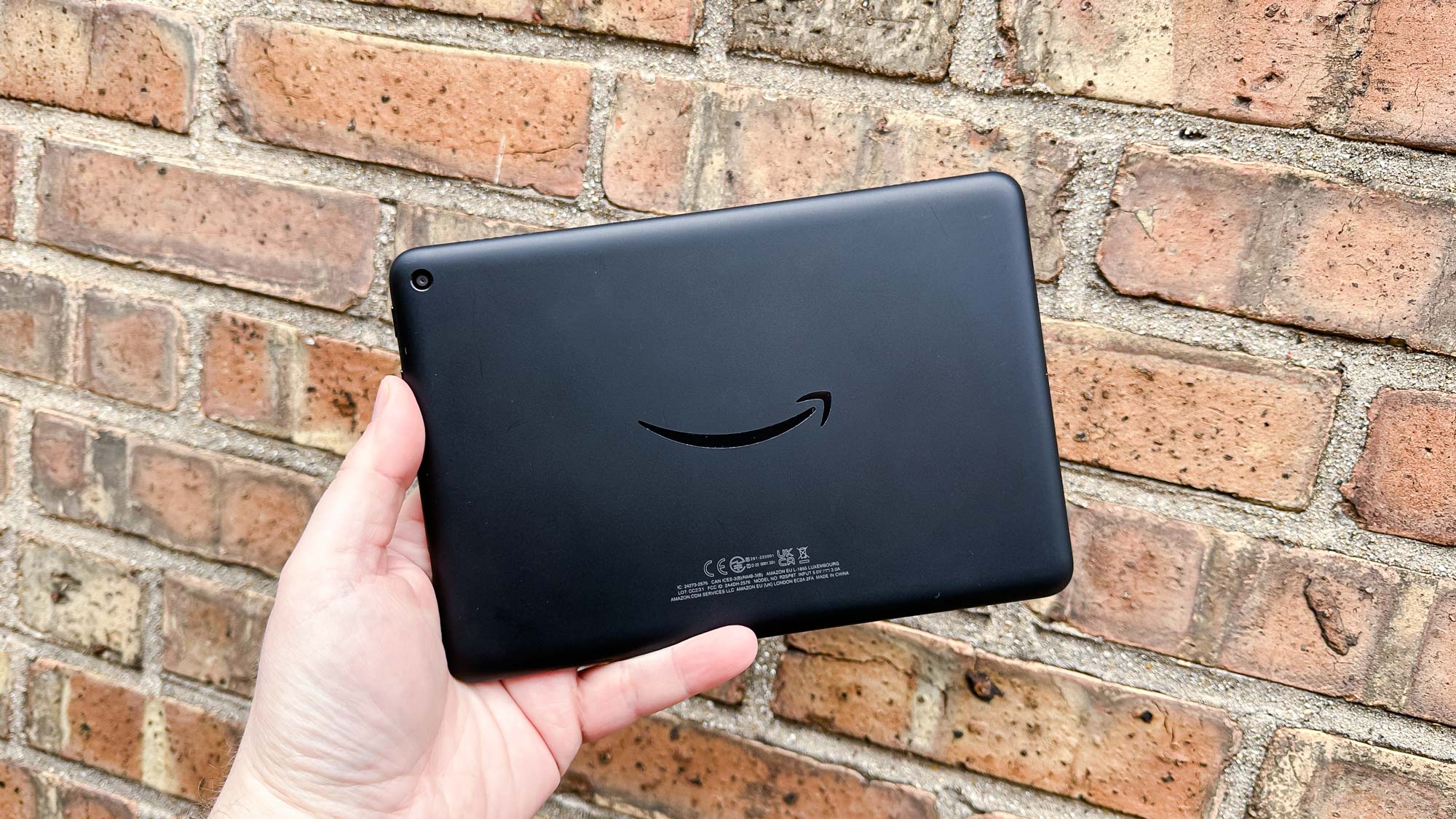
The plastic backing means that it doesn’t feel nearly as premium and refined as Apple’s iPad Mini … but that like-sized iPad costs five times as much. So bear that in mind. In any case, Amazon claims that the Fire HD 8 is twice as durable as Apple’s smallest iPad, so it may be more resistant to drops and tumbles.
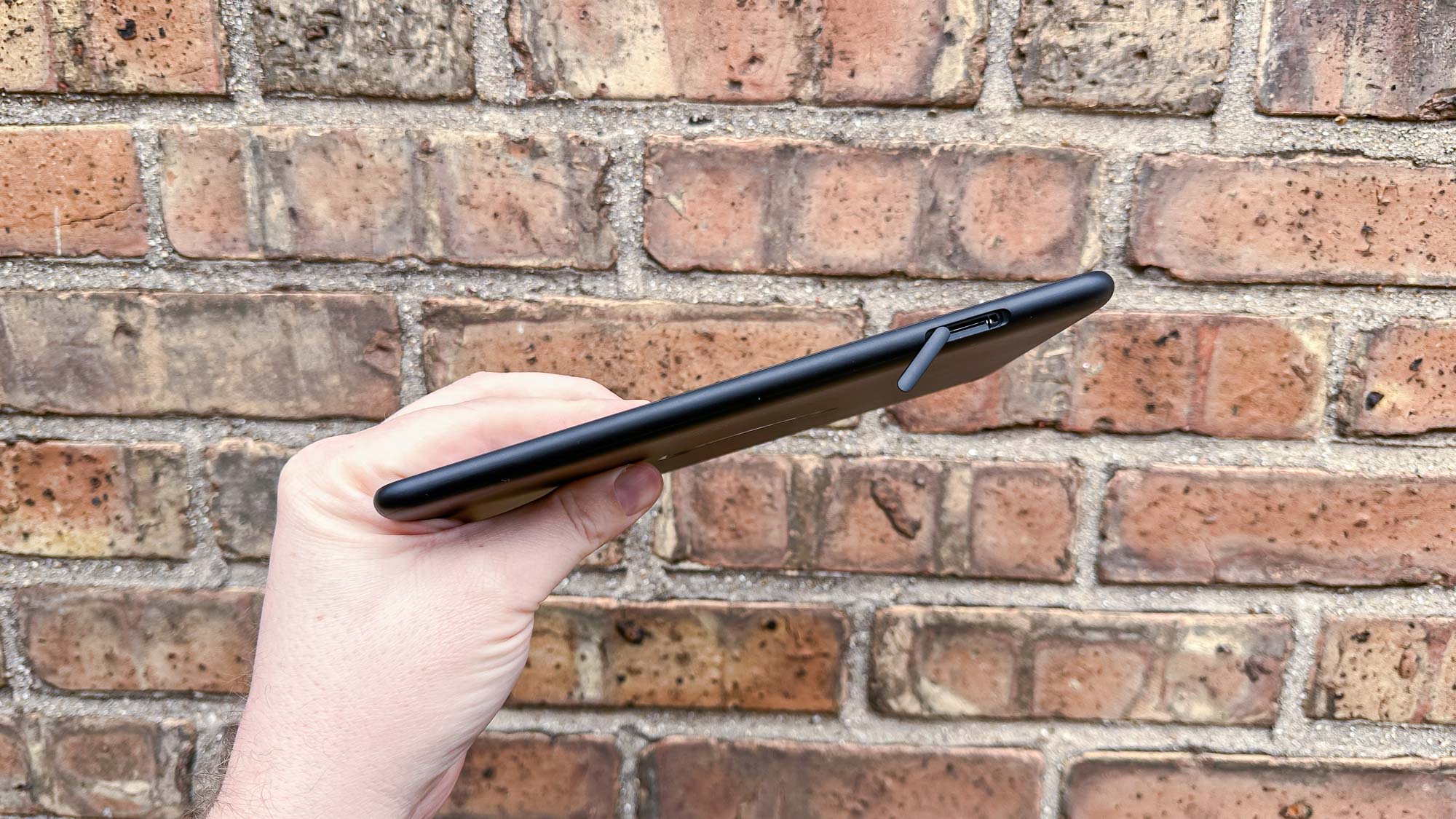
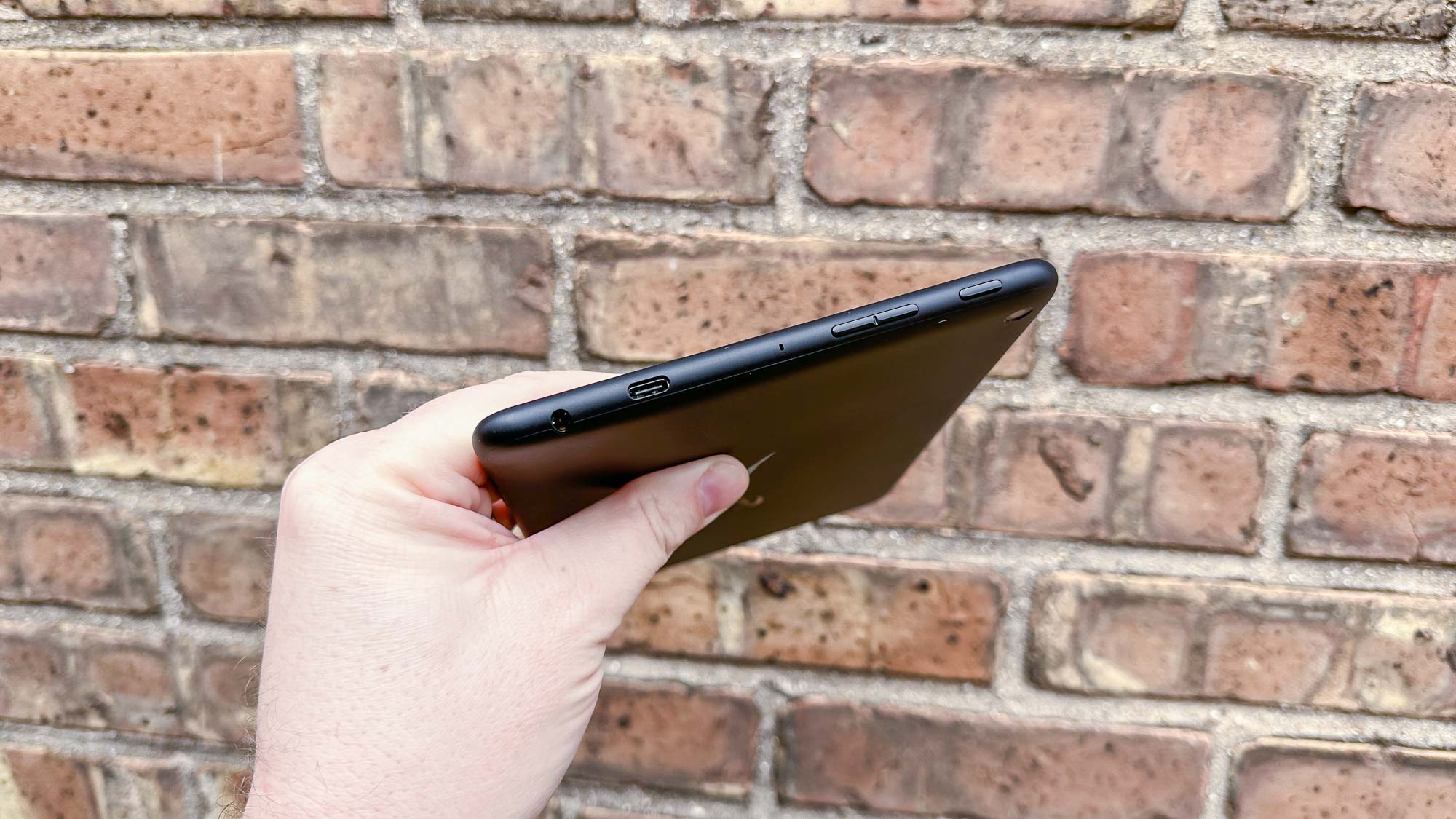
As before, this Fire HD 8 model fits most of its buttons and ports on a single side of the frame — the right side when held in landscape mode, with the camera atop the display. The power button, volume rocker, 3.5mm headphone port, and USB-C charging port are all snugly packed on that side. Meanwhile, the microSD port for expandable storage (up to 1TB) is on the bottom, beneath a tethered cover.
Amazon Fire HD 8 (2022) review: Display
- The 8-inch LCD screen has a modest 1280x800 resolution.
- It’s bright and reasonably crisp at this size and price point.
Given the price, it’s fair to come into the Amazon Fire HD 8 experience not expecting much from the screen. Thankfully, this is an entirely solid 8-inch LCD touch display for a tablet of this size.
At 1280x800 resolution, it’s handily beaten by iPads and even budget-friendly Android alternatives, but it’s crisp enough to support 720p HD content and even text looks reasonably sharp when you’re not hunting for individual pixels.
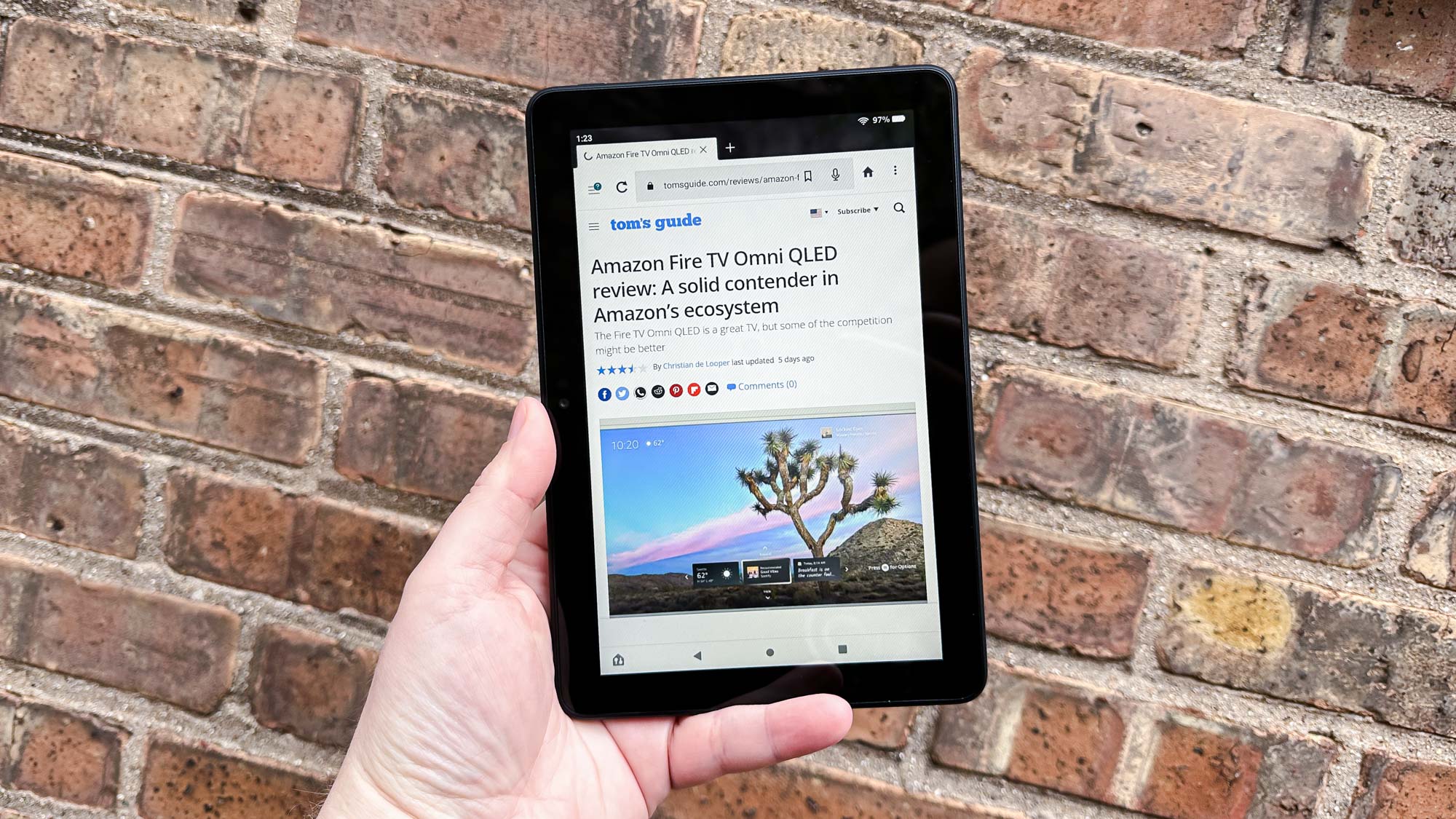
It’s only about 10% sharper than the cheaper Amazon Fire 7, in terms of pixel density (as measured in pixels per inch, or PPI), but it’s enough of a difference to notice. This is also a nicely bright display, as we measured 474 nits of brightness in lab testing.
It doesn’t look as dull or lifeless as the Fire 7 by comparison, either. We measured 88% of the sRGB color gamut on the Fire HD 8, compared to about 67% on the Fire 7, along with 62.3% of the DCI-P3 color space on the Fire HD 8 versus 47.4% on the Fire 7.
Amazon Fire HD 8 (2022) review: Performance
- It’s solidly responsive for basic tasks, with mostly tolerable spurts of lag.
- However, it struggles with 3D gaming. Some games crashed during testing.
For casual browsing and entertainment needs, the Fire HD 8 serves up adequate performance. It’s an ideal portable screen for watching video in bed or on your commute, it handles web browsing across multiple tabs with only modest compounding sluggishness, and it can run casual games like Candy Crush Saga and Subway Surfers relatively well.
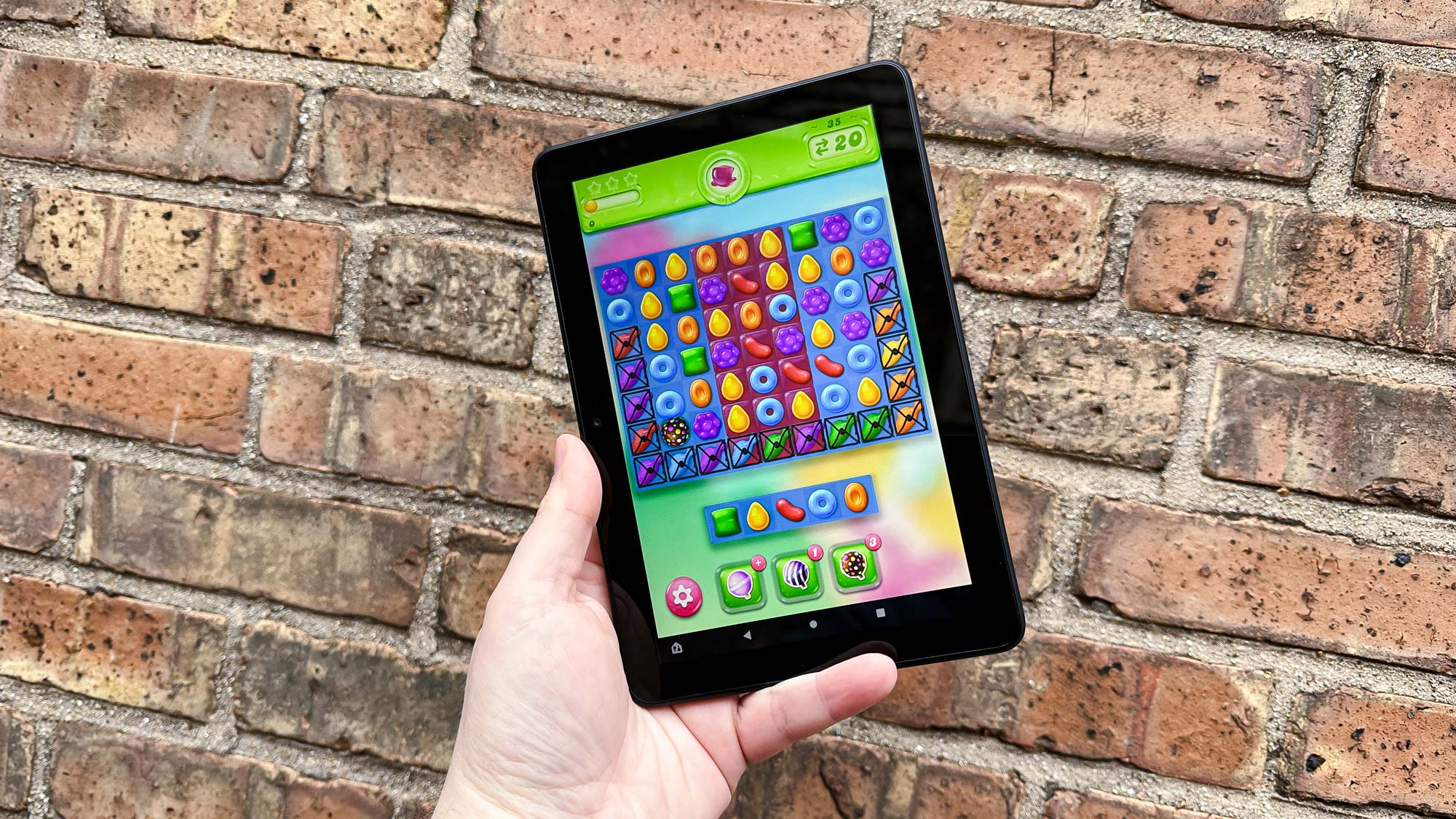
All that said, keep your expectations in check. Amazon’s hardware isn’t nearly as powerful as you’d find in even the entry-level iPad, and it’s hardly a silky-smooth experience navigating the interface and jumping between apps. There are little hangs and delays along the way, but they are much less noticeable than on the Fire 7 — and therefore far less obnoxious.
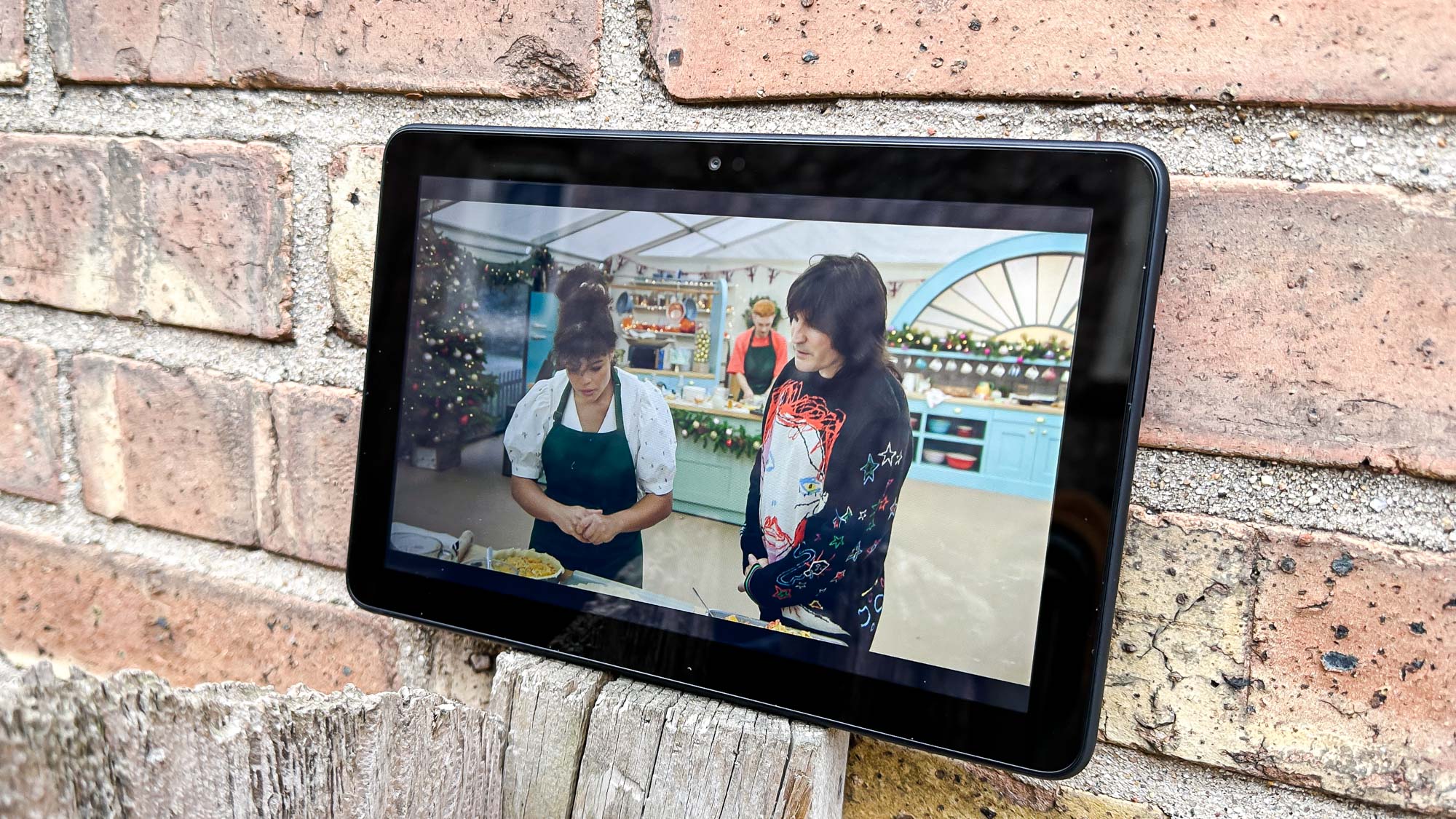
In benchmark testing, the Fire HD 8 put up a Geekbench 5 multi-core score of 854 — a nice bump from the 540 score we registered on the latest Fire 7 tablet, and the everyday benefits of that increase are apparent.
On the other hand, Apple’s iPad Mini gave us a score of 4,540; about five times the power at five times the price. Samsung’s Galaxy Tab A7 budget Android tablet from a couple years ago still beats the Fire HD 8 with a Geekbench 5 multi-core score of 1,405, while the Galaxy Tab S6 Lite lands a bit below that at 1,291 in the same benchmark test.
Unsurprisingly, the Fire HD 8 struggles with power-intensive games and applications. The flashy 3D racing game Asphalt 9: Legends is marred by slowdown and kept crashing on my review unit. Curiously, it runs a bit smoother on the Fire 7, as I noticed when comparing them side by side. Battle royale shooter PUBG Mobile also crashed each time I tried playing it. And Roblox games are widely hit-or-miss in performance on the Fire HD 8.
Amazon Fire HD 8 (2022) review: Audio
- The Fire HD 8 delivers strong audio for a $100 tablet.
The Fire HD 8’s stereo speakers fare better than some pricier smartphones (and laptops) that I’ve tested, delivering audio that sounds full and reasonably robust. The two grates—both along the long edge above the selfie camera—provide playback that is markedly better than the Fire 7’s single, flat-sounding speaker. It’s night and day.
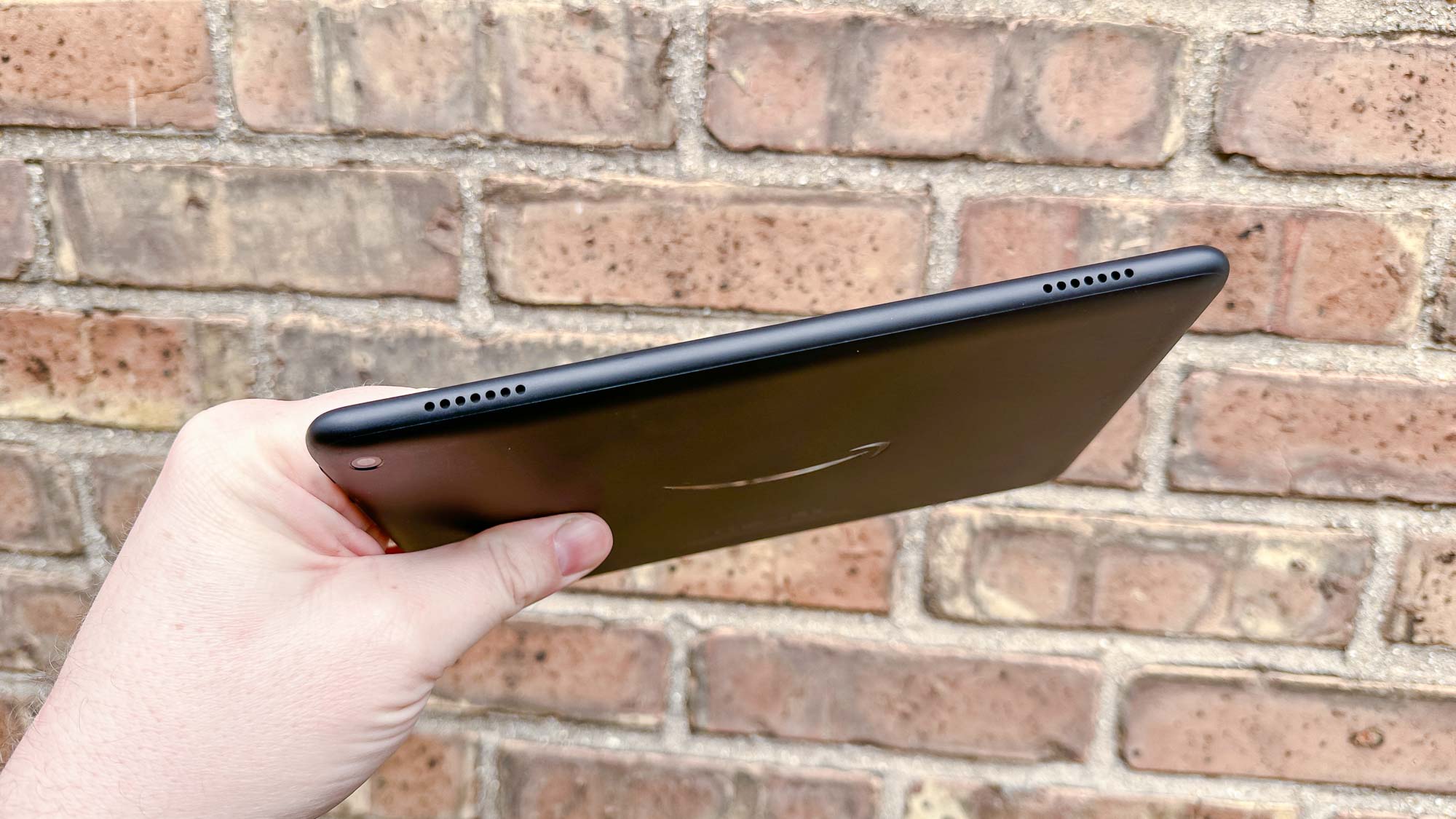
Watching the Taylor Swift Reputation Stadium Tour concert film on Netflix, for example, the Fire HD 8 provided ample aural atmosphere to elevate the compact image. It gets pretty loud, too, without losing much detail in the process, although it’s hardly a bass-heavy blaster. All things considered, it’s far better than expected.
Amazon Fire HD 8 (2022) review: Battery life
- It packs excellent battery life, especially at this size and price.
For both a cheap and compact tablet, the Amazon Fire HD 8 offers excellent uptime on a single charge. In our battery rundown test, in which the tablet continuously browses the web over Wi-Fi at 150 nits brightness, the Fire HD 8 kept running for 13:41. Compare that to 10:56 on the iPad Mini and 13:13 on the Galaxy Tab A7.
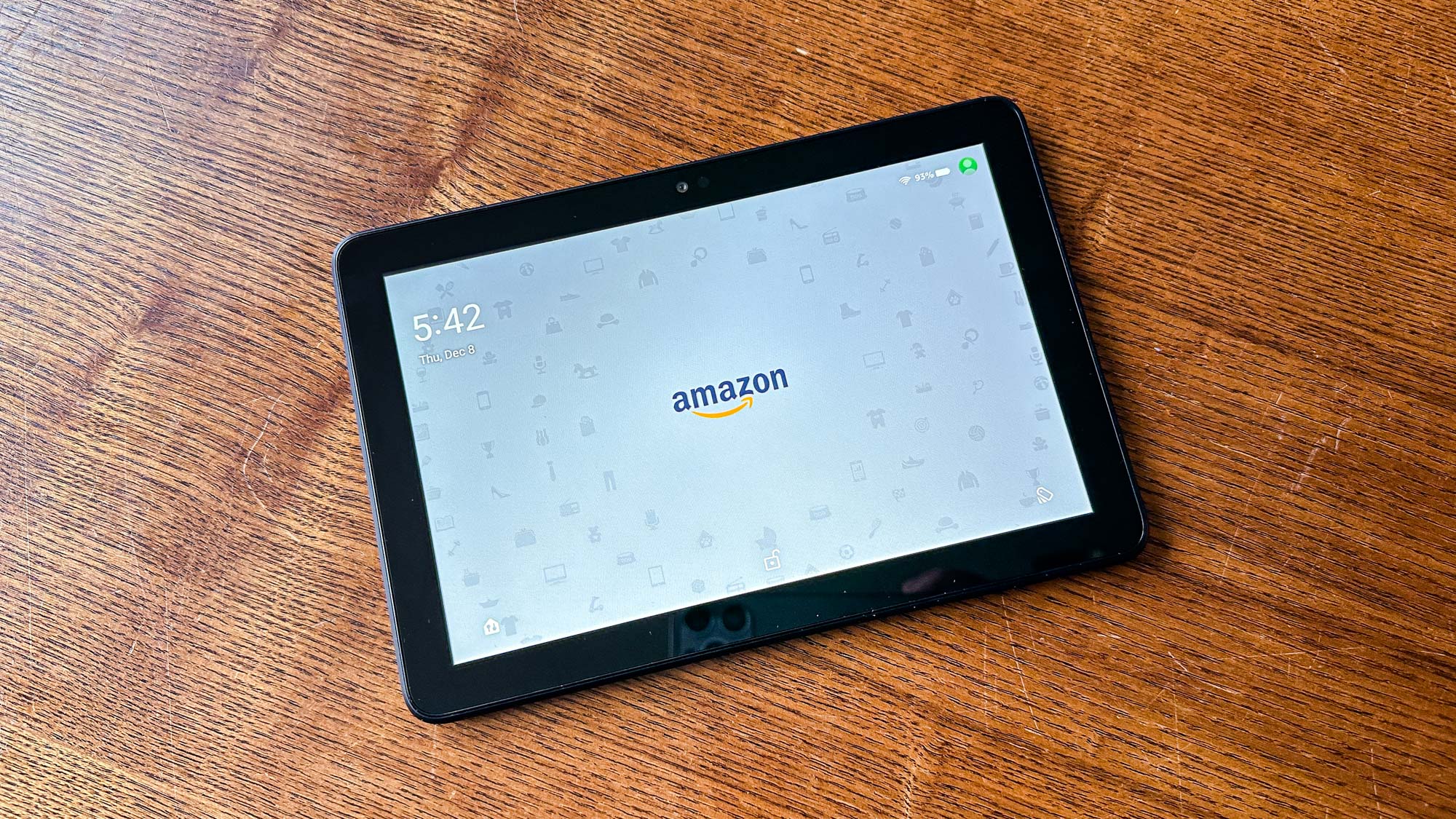
At full brightness and with more demanding apps and games in the mix, you’ll probably shave down that figure by a few hours. Even so, that’s a very comfortable window to accommodate a lengthy travel day, or potentially days of casual, occasional home usage. The Fire HD 8 is a slow charger, however, only picking up 13% of a charge in 30 minutes.
Amazon Fire HD 8 (2022) review: Cameras
- Both cameras take fuzzy shots and struggle even in well-lit scenes.
Like the smaller Fire 7, the Amazon Fire HD 8 packs a pair of 2-megapixel cameras — and neither is particularly good. Both serve up fuzzy-looking photos that lack detail even in ample lighting, and seriously struggle in lower-light indoors scenarios or in heavily backlit scenes.



If you have a semi-recent smartphone, then chances are pretty strong that you’ll get better shots from your pocket device. But for video calls with friends and family, the Fire HD 8’s front camera can do the job OK. Just don’t expect to get any snaps that are worth saving.
Amazon Fire HD 8 (2022) review: Software
- Amazon’s OS lacks Google services—and the Play Store’s bounty of apps and games.
The Fire HD 8 is built upon a forked version of Android, but it mostly doesn’t look or feel like your typical Android device. Instead, Amazon has used it to power its own custom OS, which sadly lacks a lot of the things we’ve come to expect from Android — namely Google services.
You don’t get Google’s well-stocked Play Store here for apps and games, let alone things like the Chrome web browser, an official native YouTube app, Google Maps, or useful apps like Google Docs and Sheets. You can use the web versions of things like YouTube and Maps, but some of the other omissions are more keenly felt.
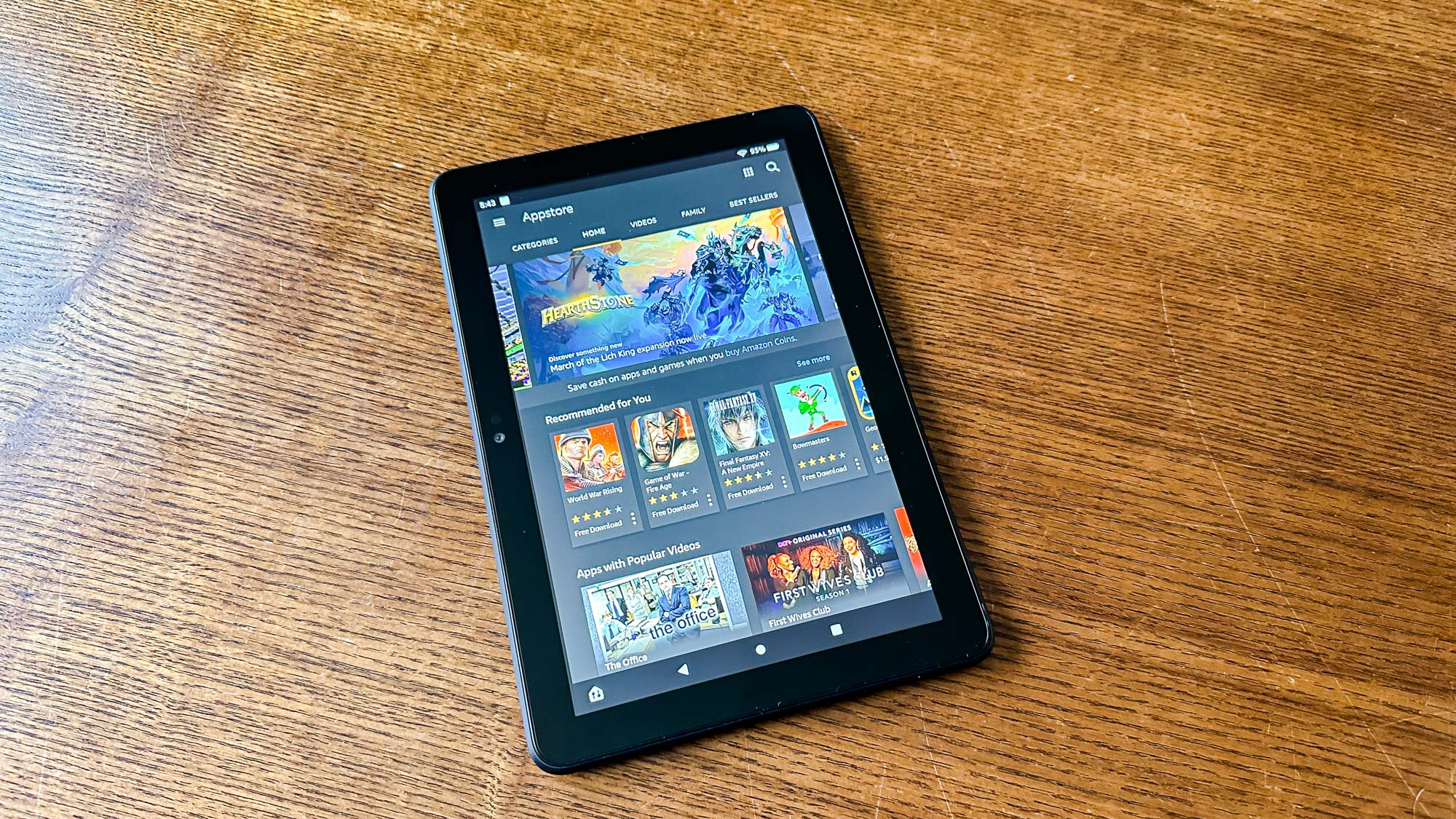
To be fair, Amazon’s ecosystem has a lot of appealing pieces. For those plugged into Amazon Prime, you’ll have access to movies, TV shows, music, ebooks, and more. And the Amazon Appstore has a lot of popular apps and games to choose from. Media apps like Netflix, Spotify, and Disney+ are here, along with Zoom, Facebook, TikTok, Instagram, and the aforementioned games (among others).
But there’s also a lot missing beyond Google’s services, such as Slack, Telegram, non-Amazon smart home apps, and a wealth of popular games found on the Play Store or Apple’s App Store. Given the $100 price, most prospective buyers can probably deal with the omissions. You’ll pay more for a tablet from Apple or Samsung, but you can do more with them, too.
Amazon Fire HD 8 (2022) review: Verdict
- Shortcomings are easily overlooked at this attractive price.
True, the 2022 edition of the Fire HD 8 costs $10 more than the previous model, but the end result is very much the same: this is a super-appealing tablet for $100, overall, and arguably the best all-around pick in the Amazon lineup in terms of balancing price and features.
It has a decent screen and great audio, excellent battery life, and good-enough performance for things like browsing the web, watching media, and using social media apps. On the other hand, the limited power means that robust games and apps struggle, the cameras are both mediocre, and Amazon’s app selection pales in comparison to rival tablets.
Still, you can’t beat this bargain. The Fire HD 8 does most of what it needs to do at a fraction of the cost of an iPad, and it’s markedly better than Amazon’s clunkier Fire 7 at $60. If you’re looking for a solid, compact tablet that won’t break the bank, the Fire HD 8 does the trick.
Andrew Hayward is a freelance writer for Tom’s Guide who contributes laptop and other hardware reviews. He’s also the Culture Editor at crypto publication Decrypt covering the world of Web3. Andrew’s writing on games and tech has been published in more than 100 publications since 2006, including Rolling Stone, Vice, Polygon, Playboy, Stuff, and GamesRadar.
